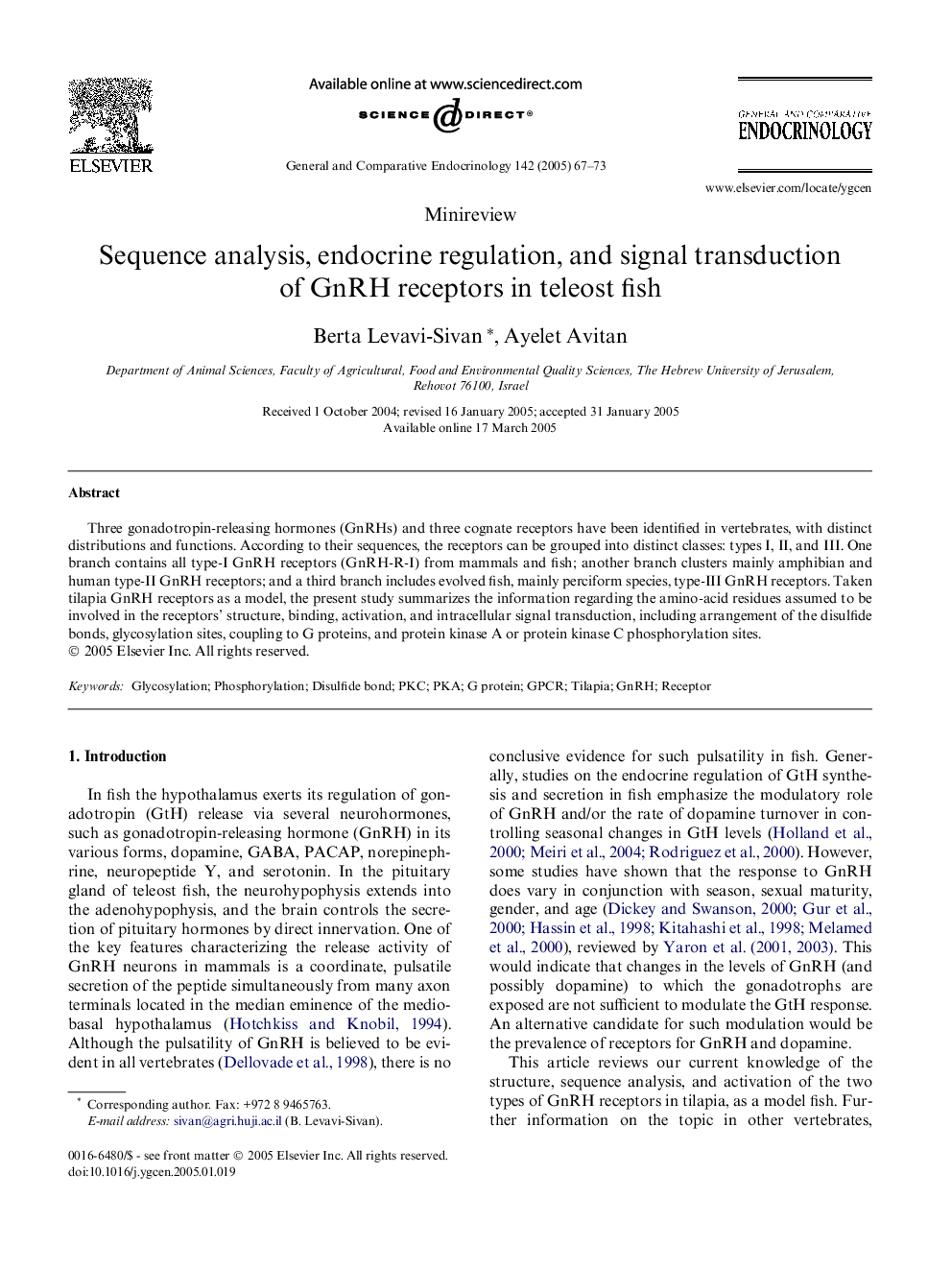| Article ID | Journal | Published Year | Pages | File Type |
|---|---|---|---|---|
| 9113193 | General and Comparative Endocrinology | 2005 | 7 Pages |
Abstract
Three gonadotropin-releasing hormones (GnRHs) and three cognate receptors have been identified in vertebrates, with distinct distributions and functions. According to their sequences, the receptors can be grouped into distinct classes: types I, II, and III. One branch contains all type-I GnRH receptors (GnRH-R-I) from mammals and fish; another branch clusters mainly amphibian and human type-II GnRH receptors; and a third branch includes evolved fish, mainly perciform species, type-III GnRH receptors. Taken tilapia GnRH receptors as a model, the present study summarizes the information regarding the amino-acid residues assumed to be involved in the receptors' structure, binding, activation, and intracellular signal transduction, including arrangement of the disulfide bonds, glycosylation sites, coupling to G proteins, and protein kinase A or protein kinase C phosphorylation sites.
Related Topics
Life Sciences
Biochemistry, Genetics and Molecular Biology
Endocrinology
Authors
Berta Levavi-Sivan, Ayelet Avitan,
